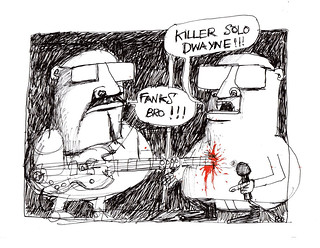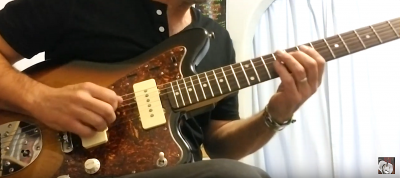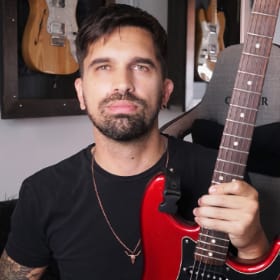Major/ Minor Pentatonic Relationship?, On 'Blue lines' lesson by Sinisa Cekics |
|
|
|
|
|
| Feb 17 2013, 05:20 PM |
|
That depends on the chord you are soloing over. What is the chord you are using?
-------------------- |
|
|
||
|
|
|
|
| Feb 17 2013, 07:14 PM |
|
Great way to begin 'playing over changes'.
In a 'blues' progression ... Major penta over the I chord. Minor penta over the IV chord. (same root for both) -------------------- - Ken Lasaine
https://soundcloud.com/klasaine2/foolin-the-clouds https://soundcloud.com/klasaine2/surfin-at-the-country-hop Soundcloud assorted ... https://soundcloud.com/klasaine3 New record ... http://www.cdbaby.com/cd/kenlasaine Solo Guitar ... https://www.youtube.com/playlist?list=PLXZh...5iIdO2tpgtj25Ke Stuff I'm on ... https://www.youtube.com/playlist?list=PLXZh...b-dhb-4B0KgRY-d |
|
|
||
|
|
|
|
| Feb 17 2013, 08:54 PM |
|
You're thinking right.
A7 - A maj. penta. D7 - A min. penta. You can of course 'cross pollenate' - there are some common tones. also, try adding the b7 (G) over the A7 chord. -------------------- - Ken Lasaine
https://soundcloud.com/klasaine2/foolin-the-clouds https://soundcloud.com/klasaine2/surfin-at-the-country-hop Soundcloud assorted ... https://soundcloud.com/klasaine3 New record ... http://www.cdbaby.com/cd/kenlasaine Solo Guitar ... https://www.youtube.com/playlist?list=PLXZh...5iIdO2tpgtj25Ke Stuff I'm on ... https://www.youtube.com/playlist?list=PLXZh...b-dhb-4B0KgRY-d |
|
|
||
|
|
|
|
| Feb 17 2013, 09:13 PM |
|
Interesting thread! Learning the dominant arpeggios would be also useful to follow the blues progression 7th chords. In this way you will be able to visualize which are the chord tones at each moment, so you will emphasize those notes.
-------------------- My lessons
Do you need a Guitar Plan? Join Gab's Army Check my band:Cirse Check my soundcloud:Soundcloud Please subscribe to my:Youtube Channel |
|
|
||
2 User(s) are reading this topic (2 Guests and 0 Anonymous Users)
0 Members:


























